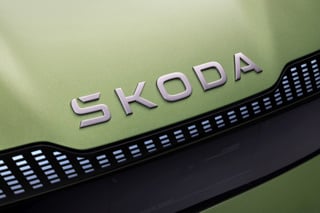By Jay Nagley
The environmental truism in the car industry is that every manufacturer has to back every alternative power source (hybrid, plug-in hybrid, electric and fuel cell) because no one knows which one will come to dominate. Now one major manufacturer has broken ranks.
 |
||
Jay Nagley was a market analyst at Porsche Cars GB before spending the past 13 years as the head of Redspy
|
||
Fiat says it has abandoned work on pretty well everything that is not petrol or diesel. As the company that invented common rail injection for diesels, and thus is responsible for a greater reduction in global CO2 output than any other manufacturer, it has earned the right to be listened to when it comes to finding practical solutions for the environment.
The company says it loses approximately £6,000 on every Fiat 500e (for Electric) it sells in California, and is therefore not inclined to invest in any more electric cars. It says consumers are not prepared to pay the premium for electric vehicles yet, and it could be 10 years before there is a viable market for them. Fiat seems to be taking the view that others can endure the pain of pioneering electric cars, and it can always jump in when battery cost and performance have improved sufficiently.
It is not much more a fan of hybrids, which it thinks are also too expensive for the gains on offer. We asked Fiat’s Head of R&D if he thought plug-in hybrids were a better solution. He surprised us by saying plug-ins were exactly the wrong direction for hybrids because of the added weight and cost – his view is that kinetic energy recovery systems (KERS) are the way to make hybrids work.
He was also scathing about hydrogen fuel cells. He gave a number of reasons why Fiat believes their problems are insurmountable:
♦ Hydrogen is the smallest and lightest molecule – much smaller than molecules of natural gas. That means it is effectively impossible to pump along a pipe: what looks to us like a solid pipe looks to hydrogen like a tubular sieve. Thus the idea of pumping it around the country like gas is a non-starter. It also makes leaving a fuel-cell car at an airport for three weeks a worry: the driver could come back to find his fuel had leaked through the fuel system’s joints and seals.
♦ Most hydrogen is currently created using steam to strip away the carbon from the hydrogen in fossil fuels. So-called steam reforming also does not produce 100% pure hydrogen – there are still trace elements of carbon monoxide, which is the next problem.
♦ Carbon monoxide kills the platinum catalyst used by fuel cells. Even small amounts can reduce the life of the fuel cell to a few years, not good enough for something designed to replace a car engine. There have, however, been claims in the past few weeks that researchers may be on the verge of a breakthrough in this area.
♦ A fuel cell car using reformed fossil fuel is not as efficient as you may think. Fuel cells themselves are 80% efficient, which is excellent. However, the reforming process is 72% efficient and the electric motor connected to the fuel cell is about 80% efficient. Putting those three things together gives an overall efficiency of 46%. Compare that with the latest diesel engine at 42% peak efficiency.
In contrast to Fiat, Hyundai and Kia, both big supporters of fuel cells, say South Korea produces enough pure hydrogen as a by-product of other chemical processes to drive 240,000 cars. Those cars would be efficient, but that is still only 24,000 new car sales a year for 10 years – again, not really a game changer. While admitting that reformed hydrogen produces CO2, they say the overall impact is lower than a conventional engine. The question is whether it saves enough to justify a total redesign of the car.
If fuel cell cars are to offer a big step forward, governments will need to encourage wind- or solar-powered electrolysis plants where water can be turned into hydrogen, which is then distributed in (hydrogen-powered) trucks.
So where does Fiat think the future lies? It believes in compressed natural gas (CNG) and, longer term, electric cars with charging on the move. Fiat says its CNG Panda has a CO2 figure of 86 g/km of CO2, and it is better for air quality than a petrol engine, let alone a diesel. With home convertors, so that people could fill up from their domestic gas supply (already a reality in some US homes), it would be convenient, cheap and relatively clean.
Longer term, it wants to see electric vehicles charged on the move – an idea similar to inductive charging already demonstrated in the UK by Qualcomm Halo. Batteries could be charged by a wireless current set into the road, so electric vehicles would only need a range of about 20 miles to get from one charged road to the next. It reckons the cost for a whole country the size of Italy or the UK would be about £40 billion – not much more than the £33 billion cost of the HS2 rail link from London to Birmingham. Now that would be a game-changer.



















Noel Lock - 10/09/2013 16:19
A lot of gas powered cars in Italy already. Over ten million LPG cars in Europe. Somewhat bigger numbers than electric.